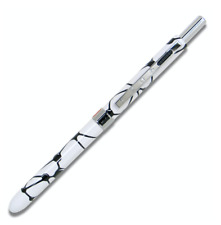
After much trial and error, scientists have coaxed human embryonic stem cells into becoming spinal motor neurons, the critical nervous system pathways that relay messages from the brain to the rest of the body. The findings, reported in the journal Nature, are important because they provide guidance for scientists trying to repair damaged or diseased nervous systems.
Motor neurons transmit messages from the brain and spinal cord, dictating almost every movement in the body from the wiggling of a toe to the rolling of an eyeball. The new development could one day help victims of spinal-cord injuries, or pave the way for novel treatments of degenerative diseases such as Lou Gehrig’s disease. With healthy cells grown in the lab, scientists could, in theory, replace dying motor neurons to restore function and alleviate the symptoms of disease or injury. Much closer to reality, the advance will allow researchers to create motor neuron modeling systems to screen new drugs, says study leader Su-Chun Zhang at the University of Wisconsin-Madison.
In addition to the narrow time frame, it was also critical to expose the growing stem cells to an array of complex chemical cocktails. The cocktails constitute naturally secreted chemicals – a mix of growth factors and hormones – that provide the exact growing conditions needed to steer the cells down the correct developmental pathway. “You need to teach the embryonic stem cells to change step by step, where each step has different conditions and a strict window of time,” said Zhang. “Otherwise, it just won’t work.”
To differentiate into a functional spinal motor neuron, the stem cells advanced through a series of mini-stages, each requiring a unique growing medium and precise timing. To start, the Wisconsin team generated neural stem cells from the embryonic stem cells. They then transformed the neural cells into progenitor cells of motor neurons, which in turn developed in a lab dish into spinal motor neuron cells. The newly generated motor neurons exhibit telltale electrical activity, a sign that the neurons, which normally transmit electrical impulses, were functional. The spinal motor neuron cells have survived in culture in the lab for more than three months. To determine the exact recipe for motor neuron growth, the research team foraged labs worldwide to obtain the growth factors and other natural chemicals needed to guide cells from one stage of motor neuron development to another. But once past a certain point, Li found that the cells kept veering off toward different cellular destinies. After hundreds of unsuccessful variations of growth factors and morphogens, Li was struck by an idea: Why not apply a chemical known to be necessary for a later stage of neuron development to a much earlier step in the process? The hunch paid off and turned out to be the final piece of the puzzle.
The discovery, says Zhang, demonstrates that human stem cells do not necessarily differentiate in linear fashion, as scientists always believed. Rather, a series of complex overlapping changes may well be the developmental norm in higher vertebrates such as humans. “We cannot simply translate studies from animal to humans.” The next step, Li says, will be to test if the newly generated neurons can communicate with other cells when transplanted into a living animal.


















Comments are closed.